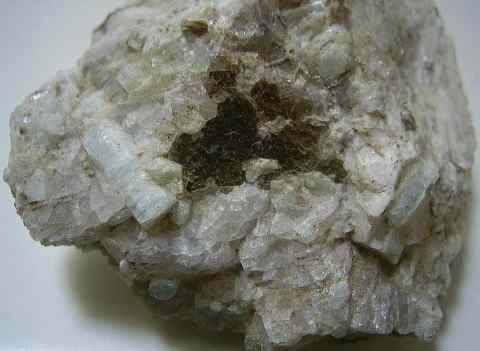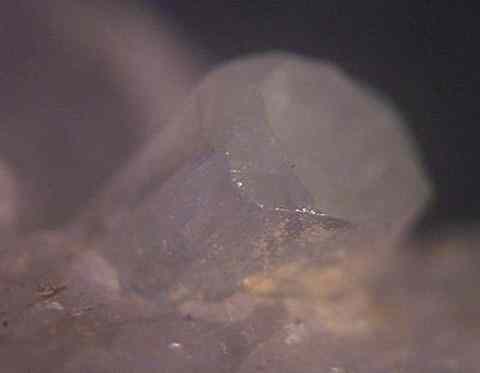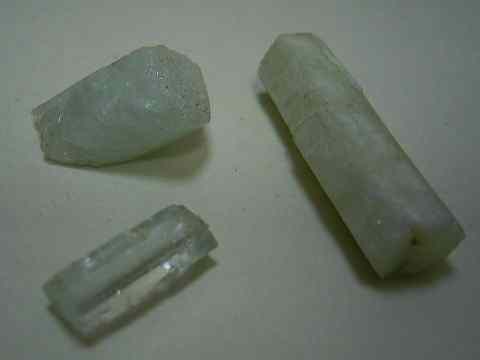Beryl
Makabe village, Sakuragawa city, Ibaraki pref., Japan
This locality is closed to collecting.
Source for Beryllium

Field of view: 150 mm. Beryl in pegmatite. The hexagonal pale blue to pale green prisms are beryl. Note that there are more than 8 beryl crystals. The opaque white parts are feldspar, and the translucent gray parts are quartz. The platy black part at the front of the specimen is biotite.
Recovered from a beryl-columbite subtype rare-element pegmatite in S-type (Ilmenite-series) granite. Formed in the middle Paleocene (60 Ma).
Beryl from this location was described in 1897.

Field of view: 5 mm. A beryl crystal terminated by (0001) and pyramidal faces.

Length of the front crystal: 10mm. Beryl crystals. The transparent crystal at the front is aquamarine variety.
Other localities
- Yamano-o (NYF Pegmatite, Aquamarine)
- Hirukawa (NYF Pegmatite, Prismatic)
- Yukiiri (NYF Pegmatite, Prismatic)
- Mount Myoken (LCT Pegmatite, Prismatic)
- Mount Gyojya (Pneumatolytic, Prismatic)
- Fukuoka Mine (Pneumatolytic, Prismatic)